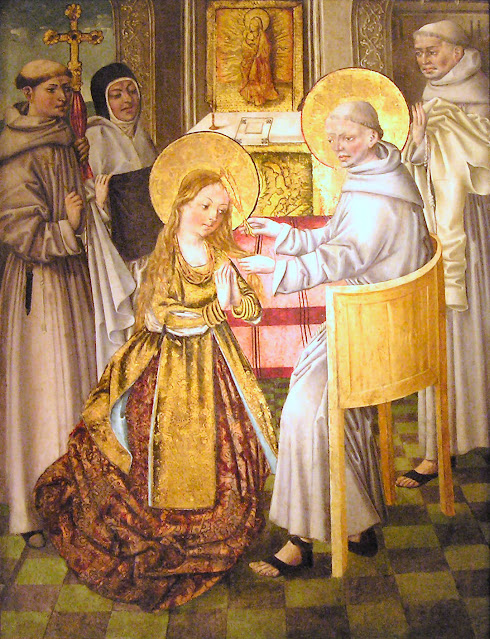Saint Clare enters the Cloister
Clare Enters the Cloister'. Painting by the German School, about 1500
(Der Eintritt der heiligen klara ins Kloster)
The changes experienced in the fifteenth and early sixteenth centuries were nowhere more strongly felt than in German-speaking lands. There, the revolutions of printing and the Protestant Reformation were first unleashed. And it was a German artist, Albrecht Dürer, who introduced the art of Renaissance Italy to northern Europe. As France, England, and Spain coalesced around strong dynasties into powerful nations, Germany remained a political mosaic of small, independent states under the aegis of the Holy Roman Emperor. Yet it sustained a strong sense of national identity, and this was reflected in the distinctive character of German art.
At the beginning of the fifteenth century, German artists, like those all across Europe, created delicate courtly art in what is now known as the International Style. This was marked by long graceful figures, richly patterned surfaces, gold decoration, and a preference for abstract ornamentation over realism. By about 1450, influenced by painting in the Netherlands, German artists adopted a more naturalistic style. In general, however, their work remained more expressive than their neighbor's. German painters tended to emphasize line and pattern over three-dimensional form. They juxtaposed strong contrasts of color and continued to use gold backgrounds long after they became old fashioned elsewhere. German altarpieces often included painted and gilded sculpture, increasing the theatricality of the sacred scenes. All these qualities pitched art to a high emotional key, one well suited to the German religious experience, which had been heavily influenced by the mysticism of such preachers as Meister Eckehart beginning in the 1300s.
This image is a public domain image, which means either that copyright has expired in the image or the copyright holder has waived their copyright. Franciscan Gallery charges for the access to high resolution copy of the image. Manually restoration was necessary in order to improve quality, without covering the original image.









Comments
Post a Comment